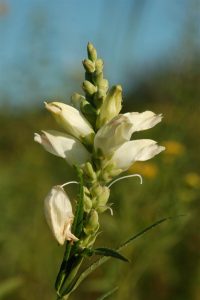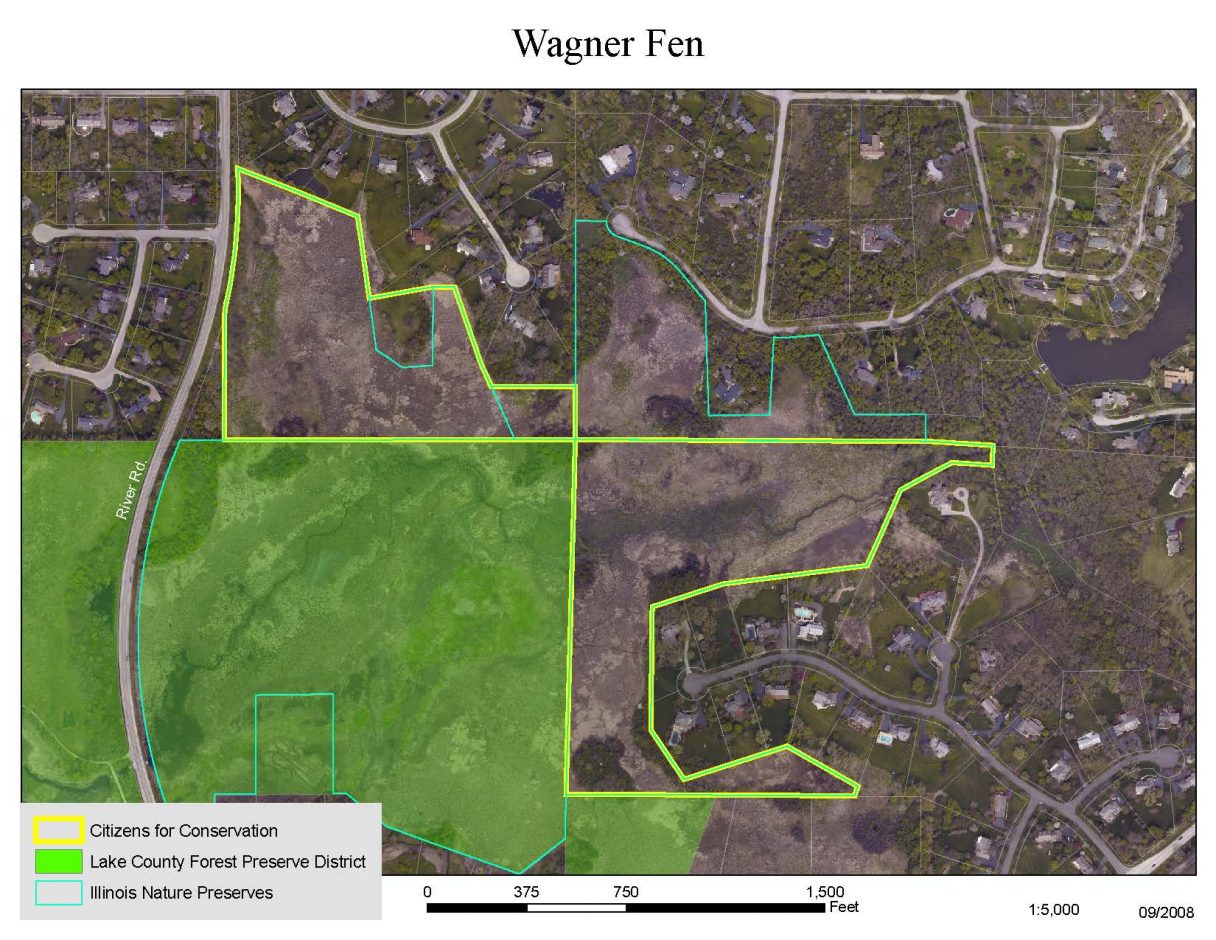Wagner Fen, one of CFC’s lesser-known preserves, lies just east of River Road and south of Roberts Road in Lake Barrington. It has been recognized as an Illinois Nature Preserve due to its variety of rare native plants. The land was donated to CFC 1980 by Mr. and Mrs. Robert Hageman. CFC owns 43.3 acres, most of the north portion of the fen; Lake County Forest Preserve District (LCFPD) owns the south portion, and the remainder is owned by a homeowners association.
A survey made in the early 2000s found more than a hundred native species, including orchids, rose pogonia, slender bog arrow grass, ferns, and rare bedstraw. There are native yellow and pink loosestrife plants, closed gentian, many varieties of aster, as well as the more common wet-area plants. The false asphodel, grass pink, beaked spike rush, and bog bedstraw are designated state-threatened species.
Water percolates through the sediments from surrounding subdivisions, and Wagner Fen filters it before it runs into the Fox River. Unfortunately, it has been invaded by many of the non-native plants that have become all too common in our area. To control a specific non-native plant, CFC released loosestrife beetles to attack the purple loosestrife. While the beetles did not totally eliminate this invasive, they have kept it under control. Many CFC workdays have been spent cutting and herbiciding buckthorn, but there is still a lot to be done. LCFPD has also made a major effort to clear buckthorn and Phragmites (giant reed).
Some of us remember the day many years ago when a nearby resident started a fire that accidentally burned much of the fen. The dried cattails provided fuel for a wildfire that darkened the sky and brought out firefighters from many companies. The fire was beneficial to the fen plants such as the meadow rue, which was abundant that summer. We would like to have controlled burns at Wagner Fen, but the effort required to avoid a repeat of the wildfire is too great to do them regularly.

Turtlehead at Wagner Fen
Wagner Fen has plants few of us have seen elsewhere, such as turtlehead and Kalm’s lobelia. Even without seeing these rarities, one can appreciate the fen’s functions filtering and cleaning water before it enters the Fox River. Just as important is its provision of superior habitat for rare plants and wildlife.
Note: There may be confusion about the difference between a fen and a bog. A fen is a type of wetland in which water percolates through sediments in the surrounding land and feeds the wetland with mineral-rich groundwater. Fens are usually alkaline and support specialized flora. Bogs, on the other hand, are closed wetlands formed from rainwater falling on their surface and unable to escape. They are acidic due to the sphagnum and other mosses growing there.

